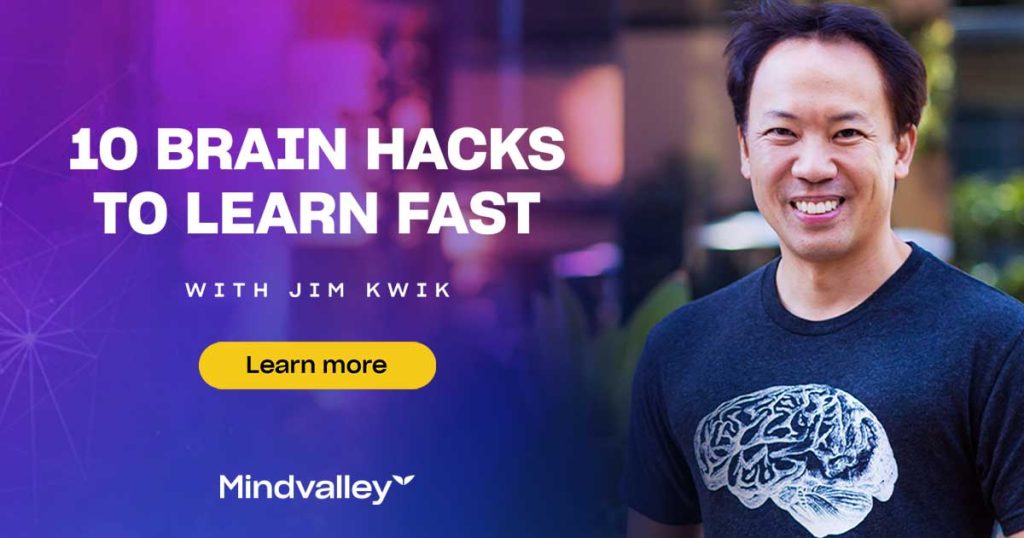Jack Mezirow began developing the Transformational Learning Theory in the 1970s, building upon the notion that our interpretations of our experiences are what give them meaning and lead to personal change.
Whatever meanings we ascribe will determine how our perspectives and expectations shift. This explains why two people can react to the same information in such different ways: they perceive and ascribe meaning in their own unique ways.
But instead of passively letting our assumptions and intuitions guide meaning-making, Mezirow asks us to apply critical and conscious reflection to fit the new information into a refined world view.
Transformational Learning Theory details how we challenge and refine our implicit perspectives so that they become explicit. Doing so can make us more self-aware and confident.
While the theory is often used by educators and course designers to improve the outcomes of their students, it’s applicable to anybody ready for a personal transformation.
Transformation is Life-Changing
Learning changes your worldly perspective, which inevitably leads you towards new thoughts and behaviours. When you change your mind, even if it’s just slightly, your life takes on a new direction.
We can experience two main types of change:
1. Gradual changes which accrue slowly over time
We are changing all the time even if we’re not aware of it. Each day we learn something new, experience something different, and forget something old. At some point we may realise just how far we’ve come without having noticed anything along the way.
2. Sudden moments of insight
Sometimes we are jolted into a new frame of mind. Something happens that we can’t make sense of, or that makes perfect sense but we had never considered that way before. It’s a paradigm shift, an aha-moment that once we see it we can’t un-see it.
Transformational learning theory deals predominantly with sudden changes. It is something we do after an event startles us, as we reflect on what’s happened and what it means for our core knowledge.The events might be frightening or exciting. They might happen in work with a promotion or job loss, or they may happen in life through personal revelations or traumatic events.
In either case, our expectations are violated and leave us in limbo, unsure of how to reconcile the discrepancy between reality and what we thought we knew.
Learning for Adults
The Transformational Learning Theory is mainly applicable to adult learning. It deals with changing assumptions and perspectives which we’ve picked up through life, and so we need to have lived long enough to have acquired them.
Adults may have a harder time letting go of long-held convictions, but they are also more cognizant of why they need to learn and in motivating themselves to achieve the desired results.
Mezirow was initially inspired by watching his wife return to college in middle age. Following this, he then ran a large study of women returning to college, detailing their personal transformations and learning experiences.
Eventually, he settled on 10 phases of a personal transformation:
1. Disorienting Dilemma
The jolt that rattles our current perspective, the uncomfortable recognition that your current experience doesn’t match your past knowledge, leaving you to resolve the conflict.
2. Self-Examination
This is where you self-test your beliefs and question how they map onto the disorienting dilemma.
3. Critical Assessment
Here we begin evaluating and validating our past assumptions and knowledge. By critically reviewing them and doing our best to remove any biased perspective, we should spot those which don’t hold up.
4. Recognition of Shared Experiences
Our discontent is important to the process of transformation, and here we recognise that the experience is shared by others. We are not the only one’s to struggle through this change, and if others can do it so can we.
5. Exploring Options for New Behaviour
What new roles, relationships, and actions are compatible with the new ideas and understanding?
6. Planning a Course of Action
With an understanding of what we had wrong and what a better understanding makes possible, now we can plot a course forwards by forming a strategy for how to learn the new perspectives.
7. Acquisition of Knowledge
Time to start implementing the plan and acquiring the skills and knowledge necessary for our transformation.
8. Trying New Roles
At this stage we put our new skills to the test by provisionally acting on them. Doing this allows us to take advantage of experiential learning—to get hands-on and active.
9. Building Confidence
As we try new roles, gain new experiences, and make our own decisions, we should begin building greater self-awareness and confidence.
10. Reintegration
Lastly, we acclimate to our new self and emerge back into our lives with our fresh perspectives.
[Sponsored Ad] The Art SuperLearning

Main Elements of a Transformation
Depending on the person and situation, some of the aforementioned phases will be more dominant than others, but the main structure will remain.
It’s possible to summarise them into 3 core stages:
- All transformations will start with some form of personal crisis, whether mild or massive. It is the catalyst, the point at which we realise there is a transformation to be had.
- We follow up a dilemma with reflection and examinations of what we thought we knew and how we can resolve the discrepancy with the new experience. It is about figuring out what improvement might look like.
- The later stages of the transformation are about action. We learn what we need to learn, try out new perspectives and integrate them into a new world view that dictates our future behaviour.
Benefits of Transformational Learning
While transformations—particularly the initial crisis—can be alarming and uncomfortable.
It’s important not to hide our heads in the sand when we’re confronted with experiences that contradict our views, but to rise to the challenge of changing our behaviours and thoughts.
By fighting through the discomfort we improve our current beliefs. But also, with practice and patience we become better critical-thinkers and problem-solvers. We learn how to handle epistemic crises with confidence and determination.
Better yet, don’t wait for the dilemmas to strike, but actively seek out opportunities to learn. Look for ideas that will make you think, and keep a critical eye on your conclusions and interpretations. Make transformational learning a constant.




